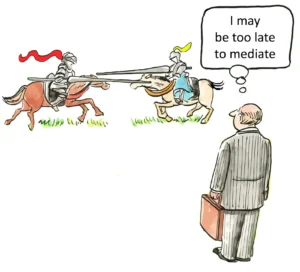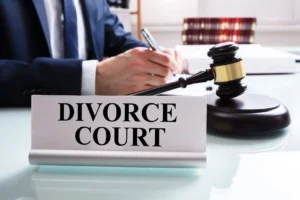Felony Reduced to Misdemeanor: Process, Eligibility & Benefits
The American criminal justice system offers pathways for individuals to move beyond their past mistakes. One such pathway involves the reduction of a felony conviction to a misdemeanor, a process that can significantly alter one’s future prospects. This legal mechanism recognizes that people can change, rehabilitate, and deserve second chances. The process of having a felony reduced to a misdemeanor varies by state but generally follows established procedures that require meeting specific eligibility criteria.
The consequences of carrying a felony record extend far beyond the courtroom. They affect employment opportunities, housing options, civil rights, and social standing. Understanding the process, eligibility requirements, and benefits of felony reduction provides hope for those seeking to rebuild their lives after involvement with the criminal justice system.
This examination of felony reduction explores the legal framework, procedures, and potential outcomes across various jurisdictions. While the specifics may differ from state to state, the underlying principles remain consistent: providing a mechanism for reformed individuals to shed the burden of a felony conviction and move forward with expanded opportunities.
Understanding Felonies and Misdemeanors
The American legal system classifies crimes into distinct categories, with felonies and misdemeanors representing two primary levels of offense severity. This classification system forms the foundation for understanding the significance of reducing a felony to a misdemeanor.
Felonies constitute the most serious category of criminal offenses. These crimes typically carry potential imprisonment exceeding one year in state or federal prison. Examples include murder, rape, robbery, burglary, and certain drug offenses. The consequences extend beyond incarceration to include substantial fines, extended probation periods, and significant collateral consequences that persist long after the sentence has been served.
Misdemeanors, by contrast, represent less serious offenses. These crimes generally carry maximum penalties of up to one year in county jail rather than state prison. Common misdemeanors include simple assault, petty theft, driving under the influence (first offense), and public intoxication. While still serious, misdemeanors carry fewer long-term consequences and less social stigma than felony convictions.
The distinction between these classifications becomes particularly significant when considering the lasting impact on an individual’s life. Felony convictions can permanently alter one’s legal rights, employment prospects, and social standing. This reality underscores the importance of the felony reduction process for eligible individuals seeking to mitigate these long-term consequences.
The Concept of “Wobblers” in Criminal Law
In many states, particularly California, certain offenses occupy a middle ground between felonies and misdemeanors. These offenses, commonly known as “wobblers,” can be charged as either felonies or misdemeanors, depending on the circumstances of the case and the prosecutor’s discretion.
The concept of wobblers provides flexibility within the criminal justice system. It allows prosecutors and judges to consider factors such as the defendant’s criminal history, the specific circumstances of the offense, and potential for rehabilitation when determining the appropriate level of charges. This flexibility extends to the post-conviction phase, where it forms the basis for many felony reduction opportunities.
Common examples of wobbler offenses include certain types of burglary, grand theft, criminal threats, and domestic violence charges. These offenses typically involve conduct serious enough to warrant potential felony treatment but may also be appropriate for misdemeanor handling depending on the specific facts and circumstances.
The wobbler concept is particularly relevant to the felony reduction process because these offenses are often the most eligible for reduction. Since the law already recognizes these crimes could be treated as misdemeanors from the outset, there exists a logical pathway for reducing them from felonies to misdemeanors after conviction under appropriate circumstances.
Legal Basis for Felony Reduction
The authority to reduce a felony to a misdemeanor stems from state statutory provisions that explicitly permit such reductions under specific circumstances. While federal law generally does not provide a direct mechanism for felony reduction, many states have enacted legislation creating this opportunity.
In California, for example, Penal Code Section 17(b) establishes the legal framework for felony reduction. This statute permits the court to declare a wobbler offense a misdemeanor in several situations: upon granting probation, after a preliminary hearing, at sentencing, or after successful completion of probation. This statutory authority gives judges significant discretion in determining whether a reduction is appropriate based on the circumstances of each case.
Other states have similar provisions, though the specific requirements and procedures vary. Some states limit eligibility to certain categories of offenses, while others impose waiting periods or additional requirements beyond successful completion of the original sentence. Understanding the specific statutory basis in the relevant jurisdiction is essential for anyone seeking a felony reduction.
The legal basis for felony reduction reflects a recognition that criminal classifications should not always be permanent. It acknowledges that individuals can demonstrate rehabilitation and that the justice system should provide mechanisms for recognizing that growth. This approach balances the need for accountability with the value of providing pathways for reintegration into society.
Methods to Reduce a Felony to a Misdemeanor
Several distinct methods exist for reducing a felony to a misdemeanor, each occurring at different stages of the criminal justice process. Understanding these options provides individuals with a roadmap for pursuing reduction at the appropriate time.
Plea Bargaining represents one of the earliest opportunities for reduction. During pre-trial negotiations, defense attorneys can advocate for charging or pleading to a misdemeanor rather than a felony. This approach involves negotiating with prosecutors to reach an agreement that serves both parties’ interests. Factors that may influence these negotiations include the strength of the evidence, the defendant’s criminal history, mitigating circumstances, and the prosecutor’s caseload and priorities.
Pre-trial Diversion Programs offer another early intervention opportunity. These programs allow defendants, particularly first-time offenders, to complete specific requirements such as community service, counseling, or rehabilitation programs in exchange for reduced charges or dismissal. Successful completion of diversion may result in the felony charge being reduced to a misdemeanor or dismissed entirely, often leaving the individual without a conviction record.
Post-conviction Relief provides options for those already convicted of felonies. This typically involves filing a motion or petition with the court requesting that the felony be reduced to a misdemeanor. The timing and requirements for such motions vary by jurisdiction, with some states permitting reduction immediately upon successful completion of probation and others imposing waiting periods or additional requirements.
Expungement and Record Sealing processes often work in conjunction with felony reduction. While not technically the same as reduction, these procedures can further mitigate the impact of a criminal record by limiting public access to conviction information after a felony has been reduced to a misdemeanor.
Each of these methods has distinct advantages and limitations. The appropriate approach depends on factors including the stage of the criminal proceedings, the specific offense involved, the individual’s criminal history, and the laws of the relevant jurisdiction.
Eligibility Criteria for Felony Reduction
Not all felony convictions qualify for reduction to misdemeanors. Eligibility typically depends on several key factors that vary by jurisdiction but generally include the nature of the offense, the defendant’s criminal history, and their post-conviction conduct.
The nature of the offense represents the most fundamental eligibility criterion. In many states, only “wobbler” offenses—those that could have been charged as either felonies or misdemeanors—qualify for reduction. Serious violent crimes, sex offenses, and other “straight felonies” typically remain ineligible for reduction regardless of other factors. For example, in California, crimes like murder, rape, and certain drug trafficking offenses cannot be reduced to misdemeanors under any circumstances.
Sentence type and completion also significantly impact eligibility. Many states require that the defendant received and successfully completed probation rather than serving a prison sentence. Completion of all probation terms—including payment of fines and restitution, compliance with counseling or treatment requirements, and regular meetings with probation officers—is typically prerequisite to reduction eligibility.
Criminal history plays a crucial role in determining eligibility. Individuals with extensive prior convictions, particularly for serious or violent offenses, may face greater challenges in obtaining a reduction. Many jurisdictions explicitly exclude individuals with certain prior convictions from eligibility for felony reduction.
Post-conviction conduct demonstrates rehabilitation and good character. Courts often consider factors such as employment history, community involvement, and absence of new criminal activity when evaluating reduction requests. Evidence of positive life changes strengthens the case for reduction by showing that the individual has moved beyond their past criminal behavior.
Time elapsed since conviction or completion of sentence may also affect eligibility. Some jurisdictions impose waiting periods before an individual can apply for reduction, while others permit applications immediately upon completion of probation or other sentence requirements.
Understanding these eligibility criteria allows individuals to assess their prospects for reduction and prepare appropriate documentation to support their request. While meeting the basic eligibility requirements does not guarantee reduction, it establishes the foundation for a potentially successful petition.
State-Specific Reduction Processes
The process for reducing a felony to a misdemeanor varies significantly across jurisdictions, with each state establishing its own procedures, eligibility requirements, and limitations. Understanding these state-specific variations is essential for anyone seeking felony reduction.
California offers one of the most well-established felony reduction processes through Penal Code Section 17(b). This statute allows for reduction of wobbler offenses at various stages: during or after the preliminary hearing, at sentencing, or after successful completion of probation. California also provides additional reduction opportunities through Proposition 47, which specifically allows certain drug possession and theft-related felonies to be reduced to misdemeanors, even retroactively for convictions that occurred before the proposition passed in 2014.
Florida’s approach differs substantially. The state does not have a direct statutory equivalent to California’s PC 17(b), but it does offer several pathways for effectively reducing the impact of a felony conviction. These include pre-trial intervention programs, plea negotiations, and in some cases, post-conviction motions to modify sentences. Florida also permits certain offenders to seek restoration of civil rights after completion of their sentences, which can mitigate some consequences of a felony conviction.
North Carolina handles felony reduction primarily through the plea bargaining process and through structured sentencing guidelines that categorize offenses by severity. While North Carolina does not have a specific statute dedicated to felony reduction, the state’s district attorneys have considerable discretion in charging decisions and plea negotiations, which can result in reduced charges for eligible offenses and defendants.
Oregon permits felony reduction for certain Class C felonies under specific circumstances. The process typically requires filing a motion with the court after completion of all sentence requirements, with the court considering factors such as the nature of the offense, the defendant’s criminal history, and evidence of rehabilitation.
These state-specific variations highlight the importance of consulting with an attorney familiar with local laws and procedures. What constitutes an eligible offense in one state may be ineligible in another, and the timing, documentation, and procedural requirements can differ substantially across jurisdictions.
The Petition Process for Felony Reduction
Filing a petition for felony reduction requires careful preparation and attention to procedural details. While specific requirements vary by jurisdiction, the general process follows similar patterns across states.
The first step involves gathering documentation to support the petition. This typically includes court records from the original case, proof of completion of all sentence requirements (including probation discharge papers, receipts for paid fines and restitution, and certificates from completed programs), character references, and evidence of rehabilitation such as employment history, educational achievements, and community involvement. Thorough documentation strengthens the petition by providing concrete evidence of eligibility and rehabilitation.
Preparing the petition itself requires attention to legal formalities. Many jurisdictions provide standardized forms for felony reduction requests, while others require drafting a formal legal motion. The petition typically includes identifying information about the case, a statement of eligibility under relevant statutes, and arguments supporting the reduction request. Some jurisdictions require inclusion of a proposed order for the judge to sign if the petition is granted.
Filing the petition involves submitting the completed paperwork to the appropriate court, typically the same court where the original conviction occurred. This process usually requires payment of filing fees, though fee waivers may be available for those with financial hardship. The petition must be filed in accordance with local court rules regarding format, number of copies, and service requirements.
After filing, most jurisdictions schedule a hearing where the petitioner can present arguments supporting the reduction request. The prosecutor typically receives notice of the petition and may support, oppose, or take no position on the request. At the hearing, the judge considers the petition, any opposition, and may ask questions before making a decision. Some jurisdictions permit decision without a hearing for unopposed petitions.
If the petition is granted, the court issues an order reducing the felony to a misdemeanor. This order should be maintained as proof of the reduction for future reference. If denied, some jurisdictions permit reapplication after a waiting period, while others allow for appeal of the decision to a higher court.
Factors Courts Consider When Evaluating Reduction Requests
When deciding whether to grant a felony reduction, courts weigh numerous factors related to the original offense, the defendant’s history, and their post-conviction conduct. Understanding these considerations helps petitioners prepare stronger applications and realistic expectations.
The nature and circumstances of the original offense significantly influence reduction decisions. Courts examine the severity of the crime, whether violence or weapons were involved, the amount of any financial loss or property damage, and whether the offense was an isolated incident or part of a pattern of criminal behavior. Less serious offenses without aggravating factors present stronger candidates for reduction.
Victim impact remains an important consideration. Courts often consider whether victims suffered physical injuries, emotional trauma, or financial losses, and whether restitution has been paid. In some jurisdictions, victims receive notification of reduction requests and may provide input to the court. Cases with minimal victim impact or where victims support reduction have better prospects for approval.
The defendant’s criminal history before and after the conviction in question plays a crucial role. First-time offenders generally have stronger reduction cases than those with extensive prior records. Similarly, maintaining a clean record since the conviction demonstrates rehabilitation and supports the argument that the felony classification no longer serves public safety interests.
Compliance with sentence terms demonstrates responsibility and respect for the legal system. Courts look favorably on petitioners who fully satisfied all probation requirements, paid all fines and restitution, completed required programs, and maintained regular contact with probation officers. Any probation violations or incomplete requirements significantly reduce the likelihood of a successful petition.
Evidence of rehabilitation provides perhaps the most compelling support for reduction. Courts consider employment stability, educational achievements, community service, participation in treatment programs, family responsibilities, and other indicators that the petitioner has made positive life changes since the conviction. Letters from employers, teachers, community leaders, and treatment providers can strengthen this aspect of the petition.
Public safety considerations ultimately guide many judicial decisions on reduction requests. Courts assess whether reducing the felony would undermine public safety or diminish the deterrent effect of criminal penalties. Petitioners who can demonstrate that they pose no ongoing risk to public safety present stronger cases for reduction.
Benefits of Having a Felony Reduced to a Misdemeanor
The reduction of a felony to a misdemeanor can transform an individual’s life prospects by alleviating many of the collateral consequences associated with felony convictions. These benefits extend across multiple domains of life.
Employment opportunities expand significantly after felony reduction. Many employers automatically exclude applicants with felony convictions, either through formal policies or informal screening practices. With a misdemeanor record instead, individuals can truthfully answer “no” to questions about felony convictions on job applications, opening doors to positions previously unavailable to them. This change can lead to better-paying jobs, career advancement, and improved financial stability.
Housing options increase substantially following reduction. Landlords frequently conduct background checks and may deny housing to applicants with felony records. Public housing authorities often restrict eligibility based on criminal history, with felony convictions resulting in longer exclusion periods than misdemeanors. Reduction can therefore expand access to both private and public housing opportunities.
Restoration of civil rights represents another significant benefit. Felony convictions typically result in the loss of certain civil rights, including the right to vote, serve on juries, hold public office, and possess firearms. While specific rights restored through reduction vary by jurisdiction, many states automatically restore voting rights and jury service eligibility when a felony is reduced to a misdemeanor. The right to possess firearms may be restored in some jurisdictions, though federal restrictions may still apply depending on the nature of the original offense.
Professional licensing becomes more accessible after reduction. Many professions require state licenses that restrict eligibility based on criminal history. Occupations in healthcare, education, law, finance, and other regulated fields often permit licensure with misdemeanor records while categorically excluding those with felony convictions. Reduction can therefore open pathways to careers previously foreclosed by a felony record.
Educational opportunities may also expand. Some educational institutions and scholarship programs consider criminal history in admissions and funding decisions, with felony convictions carrying greater weight than misdemeanors. Additionally, federal student aid eligibility, which may be restricted based on certain felony convictions, can be restored through reduction.
Reduced social stigma constitutes a less tangible but equally important benefit. The label “felon” carries significant negative connotations in American society. Reduction allows individuals to move beyond this stigmatizing label and present themselves without the burden of a felony record, potentially improving social relationships and community integration.
Limitations and Exceptions to Felony Reduction
Despite its significant benefits, felony reduction has important limitations and exceptions that vary across jurisdictions. Understanding these constraints helps individuals develop realistic expectations about the reduction process and its outcomes.
Not all felonies qualify for reduction. Most jurisdictions limit eligibility to specific categories of offenses, typically excluding violent crimes, sex offenses, and other serious felonies. In California, for example, only “wobbler” offenses—those that could have been charged as either felonies or misdemeanors—qualify for reduction under Penal Code Section 17(b). “Straight felonies,” which can only be charged as felonies, remain ineligible regardless of other factors.
Certain rights may not be restored even after reduction. Federal firearms restrictions, for instance, may continue to apply to certain offenses even after state-level reduction to a misdemeanor. Similarly, some professional licensing boards may still consider the original felony conviction even after reduction, particularly for positions involving vulnerable populations or financial responsibility.
Record accessibility presents another limitation. While reduction changes the legal classification of the offense, it typically does not erase the conviction from all records. The original felony charge may still appear in comprehensive background checks, though it should be accompanied by information about the reduction to a misdemeanor. This distinction matters because some entities may access complete criminal history information rather than just current conviction status.
Immigration consequences may persist despite reduction. For non-citizens, certain criminal convictions trigger immigration consequences including deportation, inadmissibility, or ineligibility for naturalization. While reduction to a misdemeanor may mitigate some immigration consequences, it does not eliminate all potential immigration impacts, particularly for offenses considered “aggravated felonies” under federal immigration law.
Enhanced penalties for future offenses may still apply in some jurisdictions. Even after reduction, the original felony conviction might be counted for purposes of sentence enhancement if the individual commits new offenses in the future. This means that while the conviction is treated as a misdemeanor for most purposes, it may still be considered a felony in the context of subsequent criminal proceedings.
Timing restrictions limit when reduction can be sought. Some jurisdictions impose waiting periods before an individual becomes eligible to petition for reduction, while others require completion of all sentence terms, including probation, before a petition can be filed. These timing requirements can delay access to the benefits of reduction.
Understanding these limitations helps individuals make informed decisions about pursuing reduction and develop appropriate strategies for addressing remaining challenges even after reduction is granted.
The Role of Legal Representation in Felony Reduction
Navigating the felony reduction process presents complex legal challenges that benefit significantly from professional guidance. While individuals can technically pursue reduction without an attorney, legal representation substantially increases the likelihood of success.
Attorneys provide expertise in navigating jurisdiction-specific laws and procedures. They understand the nuances of local statutes, court rules, and judicial preferences that can significantly impact reduction outcomes. This knowledge helps avoid procedural errors that might result in petition denial or unnecessary delays. Experienced attorneys can also identify the optimal timing for filing reduction requests based on individual circumstances and local practices.
Case evaluation constitutes a crucial early step where attorneys assess eligibility and likelihood of success. This evaluation considers factors including the specific offense, sentence completion, criminal history, and evidence of rehabilitation. Realistic assessment helps individuals make informed decisions about pursuing reduction and develop strategies to address potential obstacles.
Strategic preparation of the petition and supporting documentation significantly influences outcomes. Attorneys know what documentation proves most persuasive to local judges and how to present information effectively. They can help gather relevant records, obtain supporting letters, and organize materials to present the strongest possible case for reduction. This preparation includes anticipating and addressing potential prosecution objections before they arise.
Courtroom representation during reduction hearings provides substantial advantages. Attorneys understand courtroom procedures and etiquette, can articulate legal arguments effectively, and respond appropriately to judicial questions or concerns. Their professional presence demonstrates seriousness and respect for the process, potentially influencing judicial perception of the petition.
Negotiation with prosecutors may prove necessary in jurisdictions where the district attorney’s office takes positions on reduction petitions. Attorneys with established professional relationships with local prosecutors may secure their support or neutrality regarding the petition, significantly improving prospects for approval. These negotiations often occur informally before hearings and can shape the outcome of the formal proceedings.
While legal representation involves costs, many public defender offices, legal aid organizations, and pro bono programs offer assistance with felony reduction petitions at reduced or no cost for eligible individuals. Even when private representation is necessary, the long-term benefits of successful reduction—including enhanced employment prospects and earning potential—often justify the investment.
Preparing a Strong Case for Felony Reduction
Building a compelling case for felony reduction requires thorough preparation and documentation that demonstrates both eligibility and worthiness for this significant relief. A well-prepared petition addresses all factors courts typically consider when evaluating reduction requests.
Gathering comprehensive documentation forms the foundation of a strong reduction case. This process involves collecting a wide array of materials that demonstrate your rehabilitation and readiness to have your felony reduced to a misdemeanor. The documentation should paint a complete picture of your life since the conviction, highlighting positive changes and achievements.
Key Documentation to Gather
Court Records and Case Information
Begin by obtaining official court records related to your conviction. These documents should include:
- The original charging documents
- Sentencing information
- Probation or parole completion records
- Any certificates of completion for court-ordered programs
These records provide the baseline for your case, showing that you’ve fulfilled all legal obligations stemming from your conviction.
Evidence of Rehabilitation
Compile evidence that demonstrates your efforts to reform and improve your life since the conviction. This may include:
- Certificates from educational programs or vocational training
- College transcripts or diplomas earned post-conviction
- Proof of steady employment, such as pay stubs or a letter from your employer
- Documentation of volunteer work or community service
- Certificates of completion for substance abuse treatment or counseling programs
- Records of participation in support groups or mentoring programs
This evidence shows that you’ve taken concrete steps to better yourself and contribute positively to society.
Character References
Obtain letters of recommendation from individuals who can speak to your character and the positive changes you’ve made. These may come from:
- Employers or supervisors
- Teachers or professors
- Religious or community leaders
- Probation or parole officers
- Therapists or counselors
- Long-term friends or neighbors who can attest to your transformation
These references should be recent and speak specifically to your rehabilitation and current character, rather than simply being character witnesses.
Organizing Your Documentation
Once you’ve gathered all relevant materials, organize them in a clear, logical manner. Consider creating a binder or digital portfolio with sections for:
- Personal statement or declaration
- Court and legal documents
- Employment and education records
- Rehabilitation program certificates
- Character reference letters
- Additional supporting documents (e.g., proof of community involvement, awards, or recognition)
Ensure that all documents are legible and properly labeled. If any documents are not in English, provide certified translations.
Writing a Compelling Personal Statement
In addition to gathering external documentation, write a thoughtful personal statement that:
- Acknowledges responsibility for the original offense
- Describes your journey of rehabilitation
- Explains how reducing your felony to a misdemeanor would positively impact your life
- Outlines your plans for the future and how you intend to contribute to society
This statement should be sincere, reflective, and forward-looking. It’s your opportunity to give context to the documentation you’ve gathered and to speak directly to the decision-maker reviewing your case.
Seeking Legal Assistance
While it’s possible to prepare a reduction case on your own, consider seeking the assistance of an attorney experienced in criminal record expungement or reduction. A lawyer can:
- Ensure you’ve gathered all necessary documentation
- Help you present your case in the most compelling manner
- Navigate any complex legal procedures or requirements
- Represent you in court, if required
Many jurisdictions offer free or low-cost legal clinics that can provide guidance on the reduction process.
Submitting Your Petition
Once you’ve assembled all your documentation and prepared your case:
- Obtain the necessary petition forms from your local court or state judicial website
- Complete the forms accurately and thoroughly
- Attach all supporting documentation
- File the petition with the appropriate court, paying any required fees
- Serve notice to the prosecutor’s office, if required by your jurisdiction
- Prepare for a hearing, if one is scheduled
Remember that the process of reducing a felony to a misdemeanor can be time-consuming. Be patient and persistent, and follow up with the court if you haven’t received a response within the expected timeframe.
By meticulously gathering and presenting comprehensive documentation, you significantly enhance your chances of successfully having your felony reduced to a misdemeanor. This process not only requires diligence in collecting materials but also demonstrates your commitment to rehabilitation and your readiness to move forward with a clean slate.
Citations:
- Guide to Reducing Felonies to Misdemeanors
- Clean Your Record with Prop 47
- How Many Felonies Can Be Reduced
- New Criminal Laws for 2025
- Reducing Felony to Misdemeanor in Florida
- Finding Low-Competition Keywords Guide
- Which Felonies Can Be Reduced
- Steps to Reduce Felony Charges
- Felony Reduction in North Carolina
- Los Angeles Felony Reduction Process
- Reduce Felony with Penal Code 17b
- Dropping Felony to Misdemeanor in Greensboro
- Reducing Federal Felony Charges
- Penalties After Reducing Felonies
- How to Drop Felony Charges
- Guide to Felony Reduction Process
- Record Clearing by Offense Type
- Benefits of Reducing Felony Charges
- Felony Reduction via Penal Code 17
- Top Criminal Legal Reforms 2024
- Proposed 2025 Federal Sentencing Amendments
- 2023 Record Clearing Laws Roundup
- Clean Slate Laws 2025 Updates
- Four Ways to Reduce Felony in Florida
- Guide to Federal Expungements
- 2025 Proposed Sentencing Guidelines PDF
- Reducing Past Felony to Misdemeanor
- Felony Disenfranchisement Reform 1997-2023
- Sentencing Guidelines for US Courts
- 50-State Judicial Expungement Comparison
- Clear Felony Record with Expungement
- Clean Slate 2025 Overview
- Reducing Felony Convictions to Misdemeanors
- Finding Low-Competition High-Volume Keywords
- Steps for Reducing Felonies
- When Felony Can Be Reduced
- Challenging Criminal Conviction Consequences
- Video on Reducing Felony Charges
- Choosing SEO Keywords for Legal
- Collateral Consequences of Criminal Convictions
- How to Reduce Felony Charges
- Felony Reduction in California Guide
- Unfair Impact of Felon Labels
- Reduce Felony Charges in California
- Resources for Record Clearing
- Steps to Reduce Felony Record
- Clean Slate for Immigrants Guide
- Penal Code 17b Felony Reduction
- Reducing Felony Conviction Guide
- Judicial Expungement and Sealing Comparison
- Felony Reduction with Penal Code
- New Expungement Laws in 2021
- Winnable Criminal Justice Reforms 2025
- Reducing Felony Charges in Arlington
- Can Lawyer Drop Felony to Misdemeanor
- Study on Criminal Justice Outcomes
- SEO Strategies for Criminal Defense
- Felony Reduction in Oregon Guide
- Policy Brief on Felony Reduction




















